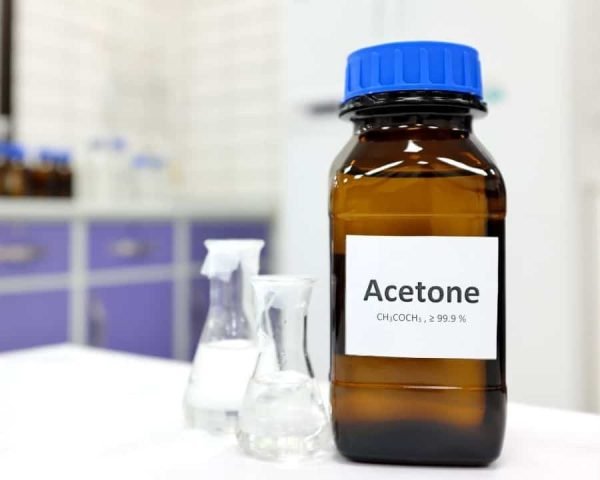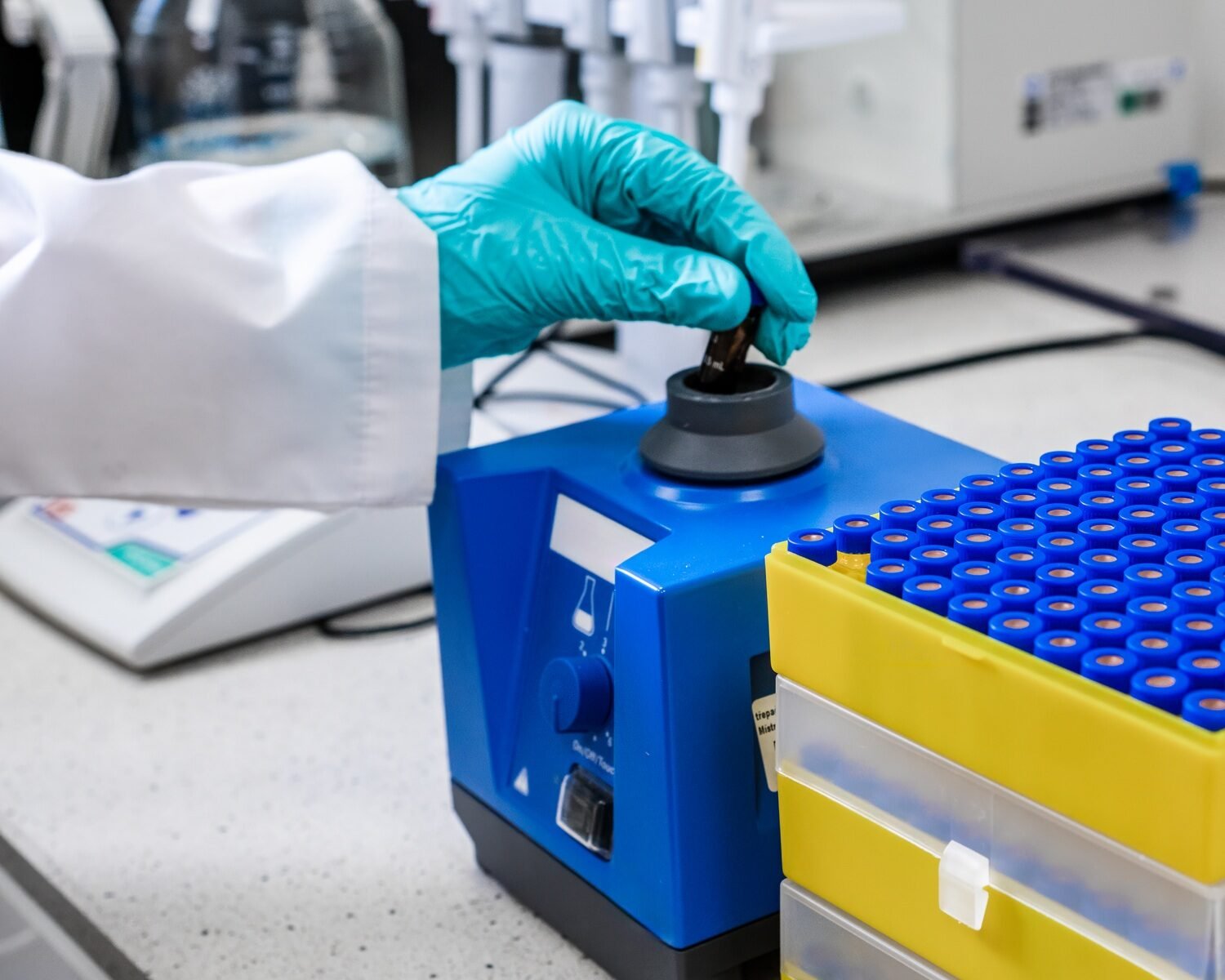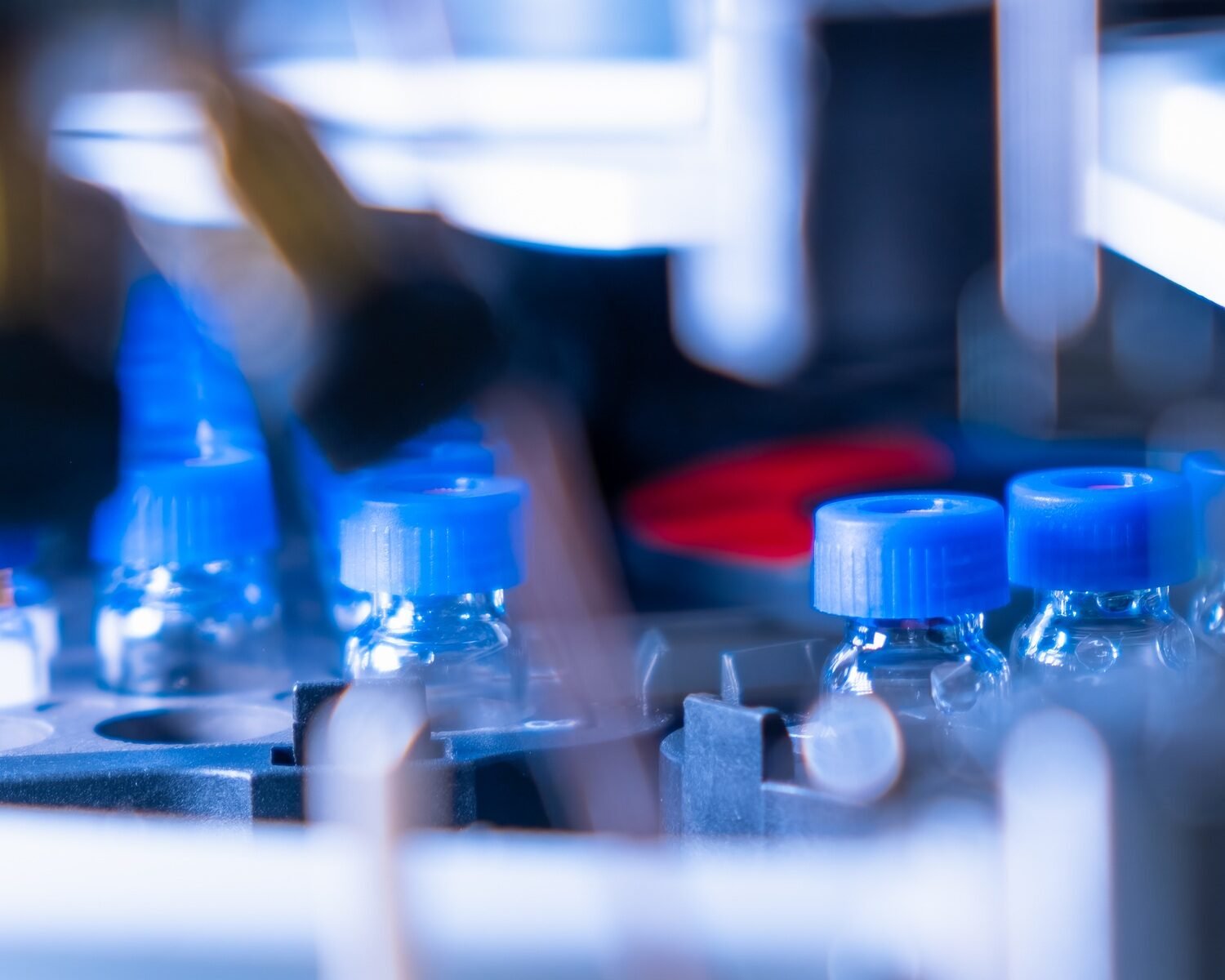Both acetone and acetonitrile are highly used solvents in the biotechnology world. Researchers and scientists use it in pharmaceuticals, the food industry, the makeup industry, etc.
In this article, you will find important information about acetone and acetonitrile. Apart from that, find out how we use both in our labs and how they are tied to HPLC.
What Are Acetone and Acetonitrile?
In the following few paragraphs, we will provide all the information you need to have and need to know about acetone and acetonitrile. We use it daily, and we can’t imagine our analyses without it.
Check this video below for a quick glimpse of what pure acetone can do. So… already super interested in science?
What is Acetone?
Acetone is a kind of organic compound with the formula (CH3)2CO. It appears as a colorless, flammable, and very volatile liquid. It’s the simplest and smallest in the ketone family.
It also has a 58 g/mol molar mass. The characteristics are a strong, unpleasant odor, and it is water-miscible. And for example, someone can use the substance as a polar solvent.
The polarity of the carbonyl group is due to the significant electronegativity difference between carbon and oxygen atoms. It is not very polar, though, and may dissolve both lipophilic and hydrophilic compounds.
Our bodies produce acetone. Wonder how?
Bodies produce it as a byproduct of regular metabolic activities. Excretion is possible in a lot of ways. So there is something you maybe didn’t know! We are all just basically superheroes.
On a larger scale, people can produce propylene directly or indirectly on an industrial scale. The cumene method is the most prevalent.
What is Acetonitrile?
CH3CN is the chemical formula for acetonitrile, an organic molecule. It comes in the form of a colorless liquid with a distinct odor. It’s the most basic nitrile compound in the organic world.
The chemical acetonitrile is created as a byproduct of the acrylonitrile manufacturing process.
This chemical has a molar mass of 41 g/mol. It’s miscible with water as well as a few other organic solvents.
Some of the characteristics are very interesting. For example, acetonitrile has mild toxicity in small concentrations. But it can undergo several metabolic processes within the human body. That results in the creation of hydrogen cyanide.
We all know how poisonous the molecule cyanide is.
We mainly use acetonitrile as a solvent when it comes to acetonitrile uses. Acetonitrile is the solvent used in refineries for butadiene purification.
Acetonitrile is also helpful in the construction of batteries. Wonder why? It can do that since it has a high dielectric constant and the capacity to dissolve electrolytes.
In addition, you can use it as a solvent in medicinal applications.
Let’s spice this very scientific section with an experiment!
The Difference Between the Acetone and Acetonitrile
The first thing we have to say is that acetone and acetonitrile are both organic molecules.
The fundamental difference between the two mentioned chemicals is pretty big, even if we don’t see it on the first try. So, the difference (between acetonitrile and acetone) is that the first is a ketone, and the second is a nitrile.
Here is a short definition of nitrile chemicals* and ketone** to better understand it!
* Any organic compound with a CN functional group is nitrile. In industrial literature, the term cyano- is interchangeably used with nitrile.
** Ketone is a kind of chemical produced by your liver. You make them when your body doesn’t have enough of the hormone insulin to convert sugar (or “glucose”) into energy. Instead, you need another energy source, so your body turns to fat.
Acetonitrile is a chemical compound with the formula CH3CN, whereas acetone is a chemical compound with the formula (CH3)2CO.
Also, acetonitrile has a molar mass of 41 g/mol, whereas acetone has a molar mass of 8 g/mol.
Acetonitrile has carbon, hydrogen, and nitrogen atoms in its atomic structure. On the other hand, acetone has carbon, hydrogen, and oxygen atoms.
Besides that, you can use acetonitrile as:
1. a solvent in refineries to purify butadiene,
2. as a solvent in the pharmaceutical business,
3. in the fabrication of batteries, among other things.
Acetone can be helpful in other situations as well. For example, acetone is essential as a polar solvent. And there is one other thing we want to share with you about the two A’s.
Although acetone is mildly hazardous at high levels, acetonitrile is moderately harmful at low doses and highly toxic after metabolism.
Now that we established the definitions and know what acetone and acetonitrile are, we can discuss the HPLC part!
HPLC with Acetone and Acetonitrile

In this section, we will talk about the HPLC grades for acetone and acetonitrile. Also, find out how they are used in our labs!
HPLC-Grade Acetone
Most individuals are familiar with or have already used acetone in some capacity. But if you work in a more formal, scientific context, you might be wondering what lab grade acetone is.
We often use acetone as a degreasing or cleaning solvent. Also, you can use it as an additive in gasoline and cosmetic goods.
Lab grade acetone, on the other hand, is a highly refined version of this molecule that you can use for:
1. scientific investigations,
2. pharmaceutical extractions,
3. and the cleaning and disinfection of lab equipment (with fragile mirror and lens components or laser optic technology).
There are many applications, and those are some of them widely explained. We’ll cover it more in the section belove! Keep reading!
Lab grade acetone is 99.9% pure acetone. This makes it exceedingly pure, contaminant-free, and potent. We use pure acetone all the time!
And if you want to use it all the time, you need to use only lab-grade acetone. Wonder why it is essential?
Well, only that way you’ll ensure excellent findings and cleanliness/sterilization of the equipment you use.
Now, let’s talk more about where you can use pure acetone.
Where Do You Use HPLC-Grade Acetone?
Acetone is a versatile solvent and lab-grade acetone. In particular, you can use it in various ways in the lab. Lab grade acetone is necessary for most scientific, lab, and medical environments.
We need it too, but why?
The answer is simple – to offer adequate care and cleaning of instruments, of course. From simply washing glassware to sterilizing surgical tools and acetone to the rescue.
To specify, you can use lab-grade acetone as a solvent in various tests besides cleaning the instruments used in the lab. Using lab-grade acetone in HPLC is an example of this.
HPLC is a separation and analysis method that uses lab-grade acetone to separate and evaluate a mixture’s various components. We mention the HPLC analysis in our previous blog posts, so take a look if you have any misunderstandings.
It is advisable to use lab-grade acetone for HPLC since it is highly pure and devoid of impurities.
Other pharmacological and medicinal applications for lab-grade acetone include THC extraction.
So, acetone strips the THC from cannabis plants, and then you can use it to make a bunch of cannabis-based medicines.
HPLC-Grade Acetonitrile
Apart from the acetone, there is also acetonitrile. HPLC Grade Acetonitrile is one of the most often solvents you can find in laboratories. It has a grade of 99.9% purity.
Acetonitrile, HPLC Grade, is a transparent liquid that you can use in HPLC analysis. In chemical laboratories, you can use it as a polar aprotic solvent in organic synthesis. We will talk more about the usage and some other characteristics below.
To minimize contamination and erroneous sample identification while doing HPLC testing, you need to know exactly what’s in the solvent.
This is why you can only use HPLC-grade acetonitrile of high purity. If you don’t use HPLC-grade acetonitrile, your sample will have a lot of peaks and valleys, which is the result of impurities. It will also give you a false identification, and you don’t want that.
So, for example, you cannot use ACS (American Chemical Society grade standard). Precisely what we explained above will happen if you use ACS-grade acetonitrile.
Remember – have a solvent that is reliable, not only clean!
Where Do You Use HPLC-Grade Acetonitrile?
There are a few excellent characteristics of acetonitrile, and those are precisely the reasons behind its usage.
Those are:
1. Low UV cutoff
2. Low viscosity level
3. Greater boiling point
Apart from the characteristics, there is more information you’ll need if you want to concur the acetonitrile.
You can use it in various settings:
1. Pharmaceuticals
2. Fragrances
3. Rubber goods
4. Insecticides
5. Acrylic nail remover
6. Batteries production
7. Extraction of the fatty acids from animals and vegetable oils
Anyone handling the acetonitrile should know how to use it properly and store it properly.
Conclusion
That would be it! We hope we have provided you with the information you need to fully understand the HPLC grade of the acetone and acetonitrile.
Contact us with any additional questions!
To conclude this article, enjoy the experiment below and maybe try it out for yourself in protected surroundings!











